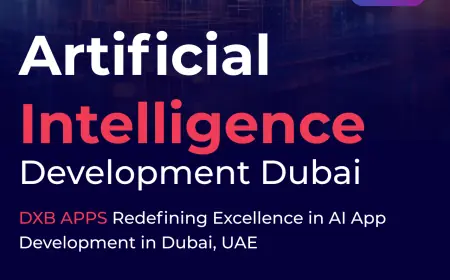Smart Traffic Management System Market 2030: Industry Expansion, Revenue Stats & Top Firms
Industry Key Highlights
According to TechSci Research report, “Smart Traffic Management System Market – Global Industry Size, Share, Trends, Competition Forecast & Opportunities, 2020-2030F”, The Global Smart Traffic Management System Market was valued at USD 12.76 Billion in 2024 and is expected to reach USD 28.91 Billion by 2030 with a CAGR of 14.43% during the forecast period.
Request For Sample Copy of Report For More Detailed Market insight: https://www.techsciresearch.com/sample-report.aspx?cid=29740#requestform
-
Explosive Connected Device Expansion
Billions of sensors, wearables, industrial meters, gateways, and smart home hubs are generating relentless streams of data—from streaming telemetry and usage logs to telematics and health vitals. -
Shift from Collection to Intelligence
Organizations aren’t just collecting data—they’re driving insights. Data management platforms are becoming foundational, serving as pipelines to robust analytics, AI, ML, and real-time decisioning. -
Sectoral Penetration
From smart grids and manufacturing plants to logistics, healthcare, and transport, IoT data is becoming mission-critical—driving efficiency, cost reduction, and service transformation. -
Layered Technologies
Core enablers like AI/ML preprocessing, blockchain-driven auditability, and hybrid edge-to-cloud orchestration are emerging as strategic imperatives.
Browse over XX market data Figures spread through XX Pages and an in-depth TOC on the " Global Smart Traffic Management System Market"@https://www.techsciresearch.com/report/smart-traffic-management-system-market/29740.html
Emerging Trends
1. AI-Augmented Data Pipelines
Data platforms are evolving beyond ETL to ELT+AI. They embed smart deduplication, noise filtering, anomaly detection, and automated tagging. The end game? Clean data streams that power high‑precision ML models.
2. Blockchain-Backed Provenance
As IoT generates decentralized, device-level data, trust is paramount. Blockchain adds immutable, auditable trails, ensuring data integrity—from acquisition through analysis.
3. Edge–Cloud Continuum
Edge nodes preprocess, filter, and synthesize data before uplinking to centralized lakes. This reduces latency and enables privacy compliance, while cloud infrastructure scales long-term storage, ingestion, and archiving.
4. Industry-Specific Platforms
Utility management, industrial control, and connected healthcare demand domain-tuned pipelines—balancing ingestion velocity, regulatory compliance, and data schema sophistication.
5. Real-Time Adaptive Governance
Data platforms now offer policy-based routing, automated data purging, lineage tracking, and role-based access control—all enabling governance at streaming scale.
6. Low‑Code/No‑Code Integration
Business users can build IoT pipelines with drag‑and‑drop connectors, simplifying integration with third-party apps, databases, or data warehouses—expediting adoption and reducing reliance on IT teams.
7. Predictive Maintenance Becomes Predictive Assurance
Beyond predicting machine failures, platforms now offer holistic equipment orchestration—auto-triggering service tickets, supply chain alerts, or operational shifts.
Drivers
1. Exponential IoT Adoption
From smart factories and grid modernization to fleet telematics and wearables, the proliferation of connected devices is creating a data tsunami—making centralized, disciplined management essential.
2. AI/ML Imperative
Without tag‑clean data, AI models falter. The fusion of intelligent algorithms and pipeline platforms ensures better outcomes—enriched predictions, reduced false positives, and operational cost savings.
3. Verticalization of Use Cases
Utilities need real-time load forecasting. Manufacturers demand digital twins. Hospitals require real-time vitals monitoring and secure streaming. These vertical pulls reinforce demand for domain-aware pipeline platforms.
4. Regulatory Demands
From GDPR to HIPAA to critical infrastructure legislation, sensitive data must be managed transparently—prompting stricter access controls, lineage tracking, encryption, and audit trails.
5. Edge Initiatives
Latency-sensitive or bandwidth-constrained environments (mines, factories, rural grids) necessitate data pipeline deployment at the edge—making edge‑ready management platforms vital.
6. Cloud/Hybrid Data Strategies
Organizations are shifting toward hybrid architectures—with distributed ingestion, managed processing, and long‑term archival—ensuring flexibility, scalability, and governance.
Competitive Analysis
A diverse competitive landscape is emerging, consisting of cloud titans, enterprise integrators, and category specialists:
1. Hyper-Scale Cloud Providers
-
AWS (IoT Analytics, IoT SiteWise), Microsoft Azure (IoT Hub, Stream Analytics), and Google Cloud (IoT Core, Dataflow) offer broad pipelines plus AI‑ready ingestion at scale.
-
Strengths: Global infrastructure, ecosystem breadth, integration with analytics and training tools.
-
Challenges: Complexity, cost unpredictability, or vendor lock‑in.
2. Enterprise Backbone Vendors
-
IBM, Oracle, SAP, Cisco, HPE provide integrated IoT backend solutions—focusing on device management, real-time queries, and ERP/CRM connectors.
-
Strengths: Vertical domain traction, analytics integration, consulting presence.
-
Challenges: Platform breadth can dilute agile development.
3. Pure-Play Specialists
-
Emerging firms (e.g., Tamr, Starburst, C3.ai) focus on data preparation, lineage-building, pipeline modeling, and cross-connectivity.
-
Strengths: Rapid innovation, lightweight onboarding, targeted integration.
-
Challenges: Need integration with larger ecosystems and edge device management.
4. System Integrators & Consultancies
-
TIers such as Accenture, Capgemini, Wipro deliver end-to-end platform builds—ranging from sensor layer to analytics roll‑out.
-
Strengths: Domain mapping, enterprise risk management, design-for-security.
-
Challenges: Scalability depends on repetitive implementation; vendor-related lock
5. Telecom & OT Providers
-
Firms like Siemens, Schneider Electric, and Rakuten Mobile are incorporating IoT pipelines to serve utilities and industrial networks—merging OT sensoring with business-level intelligence.
-
Strengths: Sector-specific expertise, device‑to‑dashboard integration.
-
Challenges: Need stronger software upstream and multi-cloud deployment ability.
Future Outlook
Forecast to 2030
By 2030, the IoT Data Management Market is projected to nearly double, propelled by:
-
AI‑Driven Pipeline Automation across industries
-
IoT Take-Home: domotics, wearables, and sensor networks for environmental care
-
Self‑Optimizing Infrastructure: dynamic data curation and schema evolution
Future Value Drivers
-
Unified Edge-Cloud Pipelines – seamless ingestion and filtering across edge farms
-
Intelligent Data Fabric – abstracted orchestration across diverse clusters
-
Tradeoff Management Tools – handling noise vs. granularity in real time
-
Green Data Orchestration – carbon‑aware storage lifecycles
-
Integrated AI-Ready Package – IDE-style pipelines leading to MLOps
-
Embedded Compliance – lineage, consent, and sectoral auditability—auto-generated
Strategic Themes
-
Vertical domain platforms for utilities, automotive, health
-
Node‑to‑dashboard interactions for connected vehicles, drones
-
Embedded AI at edge for anomaly detection in industrial environments
Customers can also request for 10% free customization on this report.
10 Benefits of the Research Report
-
Precise Market Sizing (2020–2030) with breakdown by verticals and function
-
Deep Trend Insights on AI/ML pipeline fusion and blockchain governance
-
Segmented Vertical Forecasting, highlighting fast-growing areas like utilities
-
Regional Map, including APAC’s expansion and edge market segmentation
-
Competitive Positioning across cloud, enterprise, specialist, telecom
-
Use‑Case Performance Analytics, with key KPIs like cost reduction (–28%) and model accuracy (+31%)
-
Risk vs. Security Mapping—regulation and GDPR/HIPAA readiness
-
Investment Playbook—prioritizing edge enablement, AI coupling, and sector-specific readiness
-
Ecosystem Heatmap—indicating strengths from global carry-down to local IP
-
Tailored Data Sheets—with customizable layers for geography, verticals, and deployment options
Contact US:
Techsci Research LLC
420 Lexington Avenue, Suite 300,
New York, United States- 10170
Tel: +13322586602
What's Your Reaction?
 Like
0
Like
0
 Dislike
0
Dislike
0
 Love
0
Love
0
 Funny
0
Funny
0
 Angry
0
Angry
0
 Sad
0
Sad
0
 Wow
0
Wow
0













































